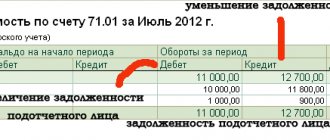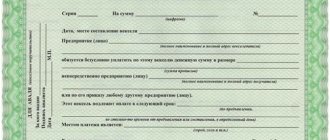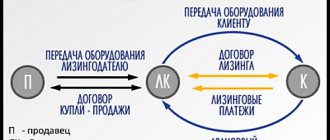Inventory structure
In order to guarantee the uninterrupted production process and satisfy managerial needs, companies form certain reserves, to control which the position outlined in today’s topic is used.
The latter refers to assets used as raw materials or materials during the production of goods for sale, as well as to meet the management needs of enterprises.
As for the tasks pursued from the point of view of inventory accounting, the following should be highlighted:
- control over the safety of inventory items in warehouses, as well as during their processing;
- ensuring the adequacy and timeliness of document flow for the movement of inventory items, determining and indicating the costs associated with their production, assessing the actual cost of used inventory items and their balances in warehouses, as well as on balance sheet items;
- constant monitoring of compliance with established inventory standards, as well as detection of surplus and unused inventory and their sale;
- ensuring the timeliness and completeness of settlements with contractors for supplied materials, as well as control over inventory items in transit.
Taking into account the role performed by certain PMZ in the production cycle, they should be divided into groups such as:
- base and raw materials;
- auxiliary raw materials;
- purchased semi-finished products;
- generated waste and fuel materials;
- components, containers and materials for its manufacture;
- household supplies and equipment.
As for the applied unit of measurement of PMZ, here, in addition to the nomenclature number, a batch, a homogeneous composition, etc. can be accepted.
Features of inventory accounting
As practice shows, a company’s inventory can arrive at its warehouse as a result of their purchase, gratuitous receipt, or as a contribution to its authorized capital. Account 10 is used to keep records of this category of goods.
Thus, the cost of inventory items at the time of their delivery to the warehouse can be taken into account using the following methods:
- at the cost of goods and materials prevailing at the time of delivery. In the circumstances, position 10 applies;
- at the discount price, when the 15th position is additionally used to form the cost of these inventories.
It is recommended that the most preferred method of accounting for minimum wages be reflected in the organization’s accounting policies.
Difficulties in accounting for transactions involving the purchase of imported materials
One of the main difficulties in accounting for transactions involving the purchase of imported materials is the procedure for assessing their cost. After all, the amount paid to the supplier, as well as the cost of various works and services directly related to the acquisition of valuables, is usually expressed and paid in foreign currency.
According to paragraphs 9 and 10 of PBU 3/2006, purchased materials must be valued in rubles at the official exchange rate in effect on the date of the transaction in foreign currency (the date the values were accepted for accounting). Since materials are accepted for accounting at the moment of transfer of ownership (even if at this moment the values are not yet in the warehouse), the assessment must be made based on the official exchange rate of the Central Bank of the Russian Federation on the date corresponding to the moment of transfer of ownership.
However, there is one important exception. If the contract provides for prepayment of materials (work, services related to the acquisition, the cost of which is subject to inclusion in the cost of materials), the amount of the prepayment is assessed at the exchange rate on the date of its actual transfer. And in the future it will not be recalculated.
If valuables are paid after they have been accepted onto the balance sheet, the cost of materials, assessed at the exchange rate on the date of transfer of ownership of them, is no longer changed due to further changes in the exchange rate.
But exchange rate differences may well arise on the company’s settlement accounts.
Accounting for materials using accounts 15 and 16
This method is convenient for accounting for import transactions. After all, usually the moment of transfer of ownership of these materials (when it is necessary to take them into account, recognize the costs of their purchase and form accounts payable to the foreign supplier) does not coincide with the moment of actual receipt into the warehouse.
If accounts 15 and 16 are used, then the posting of materials to account 10 is carried out at accounting prices at the time of their actual receipt at the warehouses and acceptance by the storekeeper. The actual cost of these materials is formed on account 15. Moreover, this is possible even if the assets are still in transit and on the territory of a foreign state.
The difference between the accounting value and the actual cost of capitalized materials is written off monthly to account 16.
EXAMPLE 1
The company buys imported materials for production. Under the contract, ownership of the materials passes simultaneously with the transfer of risks according to INCOTERMS (FCA - at the moment the goods are transferred by the seller to the carrier named by the importer). The cost of materials is 100,000 euros, transportation costs are 160,000 rubles. (including for services to the place of arrival of materials to the customs territory of the Russian Federation - 110,000 rubles and within the territory of the Russian Federation - 50,000 rubles). The customs duty is equal to 10 percent of the customs value.
The materials were shipped in December 2009. We paid the foreign supplier in the following order:
- before the shipment of materials in November 2009, an advance payment of 40,000 euros was made;
- the remaining cost (60,000 euros) was paid in January 2010.
Transport costs and customs duties were paid in December 2009 in rubles. Let's assume that the euro exchange rate was:
- on the date of transfer of the prepayment in November 2009 - 43.20 rubles. for euro;
- on the date of transfer of ownership (transfer of goods by the seller to the carrier, in December 2009) - 43.50 rubles. for euro;
- on the date of registration of customs documents (acceptance of the customs declaration by the customs authority) and payment of customs duties - 43.62 rubles. for euro;
- as of December 31, 2009 – 43.65 rubles. for euro;
- on the date of transfer of the remaining payment to the supplier in January 2010 - 43.58 rubles. per euro.
The accounting policy of the enterprise provides for the use of accounts 15 and 16. The accounting value of purchased materials is 5 million rubles.
The organization is a VAT payer, the VAT rate on imported valuables is 18 percent. In this case, the accountant will reflect the transactions as follows.
In November 2009:
DEBIT 60 subaccount “Settlements for prepayments” CREDIT 52
– 1,728,000 rubles. (40,000 EUR x 43.20 rubles/EUR) – prepayment for imported materials is listed.
In December 2009:
DEBIT 15 CREDIT 60 subaccount “Payments for imported materials”
- 4,338,000 rubles. (1,728,000 rubles + 60,000 EUR x 43.50 rubles/EUR) – reflects the cost of purchased materials;
DEBIT 60 subaccount “Payments for imported materials” CREDIT 60 subaccount “Settlements for prepayments”
– 1,728,000 rub. – the prepayment has been offset;
DEBIT 15 CREDIT 76
– 447,200 rub. ((100,000 EUR x 43.62 rubles/EUR + 110,000 rubles) x 10%) – customs duty has been charged;
DEBIT 15 CREDIT 76
– 7500 rub. – customs duty for customs clearance is charged (according to clause 1 of the Decree of the Government of the Russian Federation of December 28, 2004 No. 863);
DEBIT 19 CREDIT 68
– 885,456 rub. ((100,000 EUR x 43.62 rubles/EUR + 110,000 rubles + 447,200 rubles) x 18%) – VAT is charged on the import of materials;
DEBIT 76 CREDIT 51
– 447,200 rub. – customs duties have been paid;
DEBIT 76 CREDIT 51
– 7500 rub. – the customs fee for customs clearance has been paid;
DEBIT 68 CREDIT 51
– 885,456 rub. – VAT was paid when importing materials;
DEBIT 15 CREDIT 60 subaccount “Payments for transport services”
– 160,000 rub. (110,000 + 50,000) – reflects the cost of transport services (to be included in the cost of materials);
DEBIT 60 subaccount “Payments for transport services” CREDIT 51
– 160,000 rub. – transport services have been paid for;
DEBIT 10 CREDIT 15
– 5,000,000 rub. – imported materials received at the warehouse are capitalized at book value;
DEBIT 16 CREDIT 15
– 47,300 rub. (4,338,000 + 447,200 + 7500 + 160,000 – 5,000,000) – the difference between the actual cost of purchased materials, formed by the debit of account 15, and their accounting value (the excess of the actual cost over the accounting value) is written off;
DEBIT 91 CREDIT 60 subaccount “Payments for imported materials”
– 9000 rub. (60,000 EUR x (43.65 rubles/EUR – 43.50 rubles/EUR)) – the exchange rate difference on settlements with a foreign supplier in the part not covered by the prepayment is written off (since the amount of accounts payable should be reflected as of December 31, 2009 year in accounting and in the balance sheet at the rate of 43.65 rubles).
In January 2010:
DEBIT 60 subaccount “Payments for imported materials” CREDIT 52
– 2,614,800 rubles. (60,000 EUR x 43.58 rubles/EUR) – the remaining payment for imported materials is transferred;
DEBIT 60 subaccount “Payments for imported materials” CREDIT 91
– 4200 rub. (60,000 EUR x (43.65 rubles/EUR – 43.58 rubles/EUR)) – the exchange rate difference that arose due to changes in the exchange rate between December 31, 2009 and the date of actual transfer of money is written off.
If ownership of the materials has already transferred to the organization, but the materials themselves have not actually been posted yet (are in transit), a debit balance is formed on account 15. That is, deviations are not written off to account 16 regarding materials that have not yet arrived at the warehouse at the end of the month.
Accounting for materials without using accounts 15 and 16
The use of accounts 15 and 16 is a right, not an obligation of the organization. However, even if materials are taken into account directly on account 10, the evaluation rules will be the same. And in order to control the availability and movement of materials, it is advisable to open a separate sub-account for account 10, “Materials in Transit,” to account for valuables for which ownership has already been obtained, but which have not actually yet arrived at the warehouse. The actual cost of materials will be formed on it.
EXAMPLE 2
Let's use the conditions of example 1, but assume that the organization's accounting policy does not provide for the use of accounts 15 and 16. The accountant will write down the following.
In November 2009:
DEBIT 60 subaccount “Settlements for prepayments” CREDIT 52
– 1,728,000 rubles. – prepayment for imported materials is listed.
In December 2009:
DEBIT 10 subaccount “Materials in transit” CREDIT 60 subaccount “Payments for imported materials”
– 4,338,000 rubles. (RUB 1,728,000 + EUR 60,000 x RUB 43.50/EUR) – reflects the cost of purchased materials (at the time of transfer of ownership);
DEBIT 60 subaccount “Payments for imported materials” CREDIT 60 subaccount “Settlements for prepayments”
– 1,728,000 rub. – the prepayment has been offset;
DEBIT 10 subaccount “Materials in transit” CREDIT 76
– 447,200 rub. – customs duty has been charged;
DEBIT 10 subaccount “Materials in transit” CREDIT 76
– 7500 rub. – customs duty for customs clearance is charged;
DEBIT 19 CREDIT 68
– 885,456 rub. – VAT is charged on the import of materials;
DEBIT 76 CREDIT 51
– 447,200 rub. – customs duties have been paid;
DEBIT 76 CREDIT 51
– 7500 rub. – the customs fee for customs clearance has been paid;
DEBIT 68 CREDIT 51
– 885,456 rub. – VAT was paid when importing materials;
DEBIT 10 subaccount “Materials in transit” CREDIT 60 subaccount “Payments for transport services”
– 160,000 rub. – the cost of transport services is reflected;
DEBIT 60 subaccount “Payments for transport services” CREDIT 51
– 160,000 rub. – transport services have been paid for;
DEBIT 10 subaccount “Materials in warehouse” CREDIT 10 subaccount “Materials in transit”
– 4,952,700 rub. (4,338,000 + 447,200 + 7500 + 160,000) – materials received at the warehouse were capitalized at actual cost;
DEBIT 91 CREDIT 60 subaccount “Payments for imported materials”
– 9000 rub. (60,000 EUR x (43.65 rubles/EUR – 43.50 rubles/EUR)) – the exchange rate difference on settlements with a foreign supplier in the part not covered by prepayment as of December 31, 2009 is written off.
In January 2010:
DEBIT 60 subaccount “Payments for imported materials” CREDIT 52
– 2,614,800 rub. (60,000 EUR x 43.58 rubles/EUR) – the remaining payment for imported materials is transferred;
DEBIT 60 subaccount “Payments for imported materials” CREDIT 91
– 4200 rub.
(60,000 EUR x (43.65 rubles/EUR – 43.58 rubles/EUR)) – the exchange rate difference that arose due to changes in the exchange rate between December 31, 2009 and the date of actual transfer of money is written off. FORMATION OF AN ACTUAL COST
In accounting, the actual cost of purchased inventories is recognized as the amount of the enterprise's actual costs for the acquisition, excluding VAT and other refundable taxes (except for cases provided for by the legislation of the Russian Federation). In particular, the amount of actual costs that form the cost must be included (clause 6 of PBU 5/01):
- amounts paid in accordance with the contract to the supplier (seller), as well as paid to organizations for information and consulting services related to the acquisition of inventories;
- customs duties;
- costs of bringing to a state suitable for use for the planned purposes (including costs of additional work, sorting, packaging and improving the technical characteristics of the received reserves, not related to the production of products, performance of work and provision of services), and others.
Similar principles apply in tax accounting (clause 2 of Article 254 of the Tax Code of the Russian Federation).
However, it should be borne in mind: for certain types of expenses that are, in principle, associated with the acquisition of inventories, a special accounting procedure has been established. These are, for example, costs associated with insuring materials in transit. They must be included in accounting in the actual cost of purchased materials. And in tax accounting they can be recognized as an independent type of expense at a time on the basis of Article 263 of the Tax Code of the Russian Federation.
Application of 15 accounts in transactions
When using item 15 to record transactions, its debit part reflects the purchase price of the company's inventory according to the settlement documents received from the supplier.
Taking into account the source of origin of goods and materials and the nature of the costs of their production and delivery, account 15 is debited in correspondence with 60, 76, 71, 20, 23 and other accounts.
At the time of actual receipt and capitalization of inventories, they are written off as credit 15 of the balance sheet position and debit of 10 or 41 accounts.
In a situation where the book price of inventory exceeds its actual cost, the difference in the indicated entry must be reversed. In this case, the entry will look like this:
Dt 16
Kt 15 reversible.
The debit balance of account 15 at the end of the reporting period indicates the existence of PMZ in transit. As for Form No. 1 of financial statements, the balance of account 15 at the end of the reporting period is transferred to line 1210. If we are talking about the purchase of equipment for installation, which is subsequently reflected in account 07, then the balance of item 15 should be reflected in line 1190 balance sheet.
Account 15 in accounting
To account for raw materials, materials and inventory items for production, most companies use accounting account 10 “Materials”. However, the current Order of the Ministry of Finance No. 94n provides for the use of account 15 when accounting for materials.
This accounting account is used when capitalizing inventories at accounting rather than actual prices. We talked about the features of the formation of the accounting price (RP) in a separate article “Accounting price function”. Note that the chosen method of accounting for inventories should be fixed in the accounting policy.
Account 15 “Procurement and acquisition of material assets” is active. Consequently, when documents are received from suppliers, the purchase cost of inventory items is debited with simultaneous correspondence of the corresponding accounts (20, 23, 60, 71, 76). The loan reflects the write-off of already recorded inventories with the simultaneous debiting of the corresponding accounting accounts. For example, 10, 07, 11, 41.
Practical examples and postings
Let's imagine a situation where a certain company purchased PMZ in the amount of 2,700 pieces for a total amount of 478,000 rubles, including VAT in the amount of 86,040 rubles. The receipt of materials was carried out at the book value of the inventory in the amount of 190 rubles. for 1 unit. To support the production process, the company wrote off 600 units of inventory.
In this situation, the accounting entries for account 15 should look like this:
- Dt 60 - Kt 51 - 478,000 rubles, settlements with the supplier for PMZ;
- Dt 15 - Kt 60 - 391,960 rubles, the actual cost of purchased inventories;
- Dt 19 - Kt 60 - 86,040 rubles, accounting for value added tax;
- Dt 10 - Kt 15 - 513,000 rubles, registration at the warehouse at book value;
- Dt 15 - Kt 16 - 35,000 rubles, write-off of the difference between the accounting and actual price;
- Dt 20 - Kt 10 - 114,000 rubles, write-off of inventory items into production;
- Dt 20 - Kt 16 - 7,777.78 rubles, write-off of the amount at the end of the reporting period.








